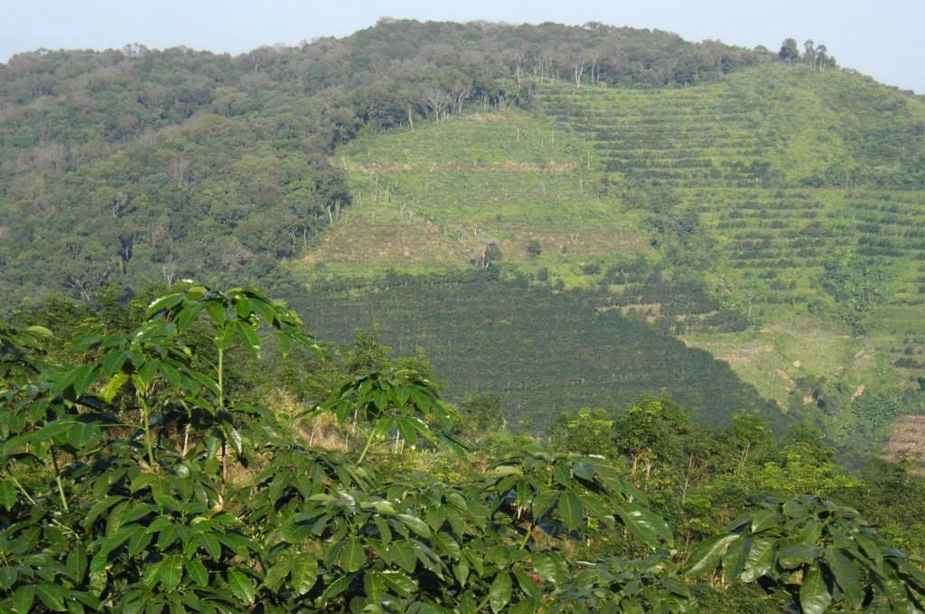Cambodia's tropical forests give way to rubber tree plantations
Study by geographers of the HU confirms the relationship between destruction of forests and price of rubber
Since the mid-2000s, the rising global demand for natural rubber has primarily been the result of the growth of the Chinese tyre and automotive industry. In a study published in Nature Plants, Kenneth Grogan and a team of authors from the University of Copenhagen and Humboldt-Universität zu Berlin used high resolution satellite data to estimate the amount of cleared woodland in Cambodia that has had to give way to rubber trees and palm oil plantations since the turn of the millennium. According to the researchers, more than 2.2 million hectares – 24% of Cambodia's woodland – were destroyed between 2001 and 2015. Almost one quarter of the cleared land was used to plant Hevea brasiliensis – a species of rubber tree not native to Cambodia.
While rubber prices hovered around the one dollar per kilogram mark until the early 2000s, in 2011 the peak price was more than 6 US dollars. The scientists’ analyses show that there is a strong correlation between the rate of deforestation and the commercial value of rubber. However, they also illustrate the close link between land use and tropical deforestation on the one hand and rising global consumption and political conditions on the other. Cambodia's forests are likely to continue to dwindle as long as Cambodia pursues its policy of promoting agro-industrial rubber plantations.
Publication: Grogan, K., Pflugmacher, D., Hostert, P., Mertz, O., & Fensholt, R. (2018). Unravelling the link between global rubber price and tropical deforestation in Cambodia.
Nature Plants. doi:10.1038/s41477-018-0325-4
Contact
Humboldt-Universität zu Berlin
Institute of Geography
Prof. Dr. Patrick Hostert
Tel.: 030 2093-6805
patrick.hostert(at)geo.hu-berlin.de
Dr. Dirk Pflugmacher
Tel.: 030 2093-9433
dirk.pflugmacher(at)geo-hu-berlin.de
